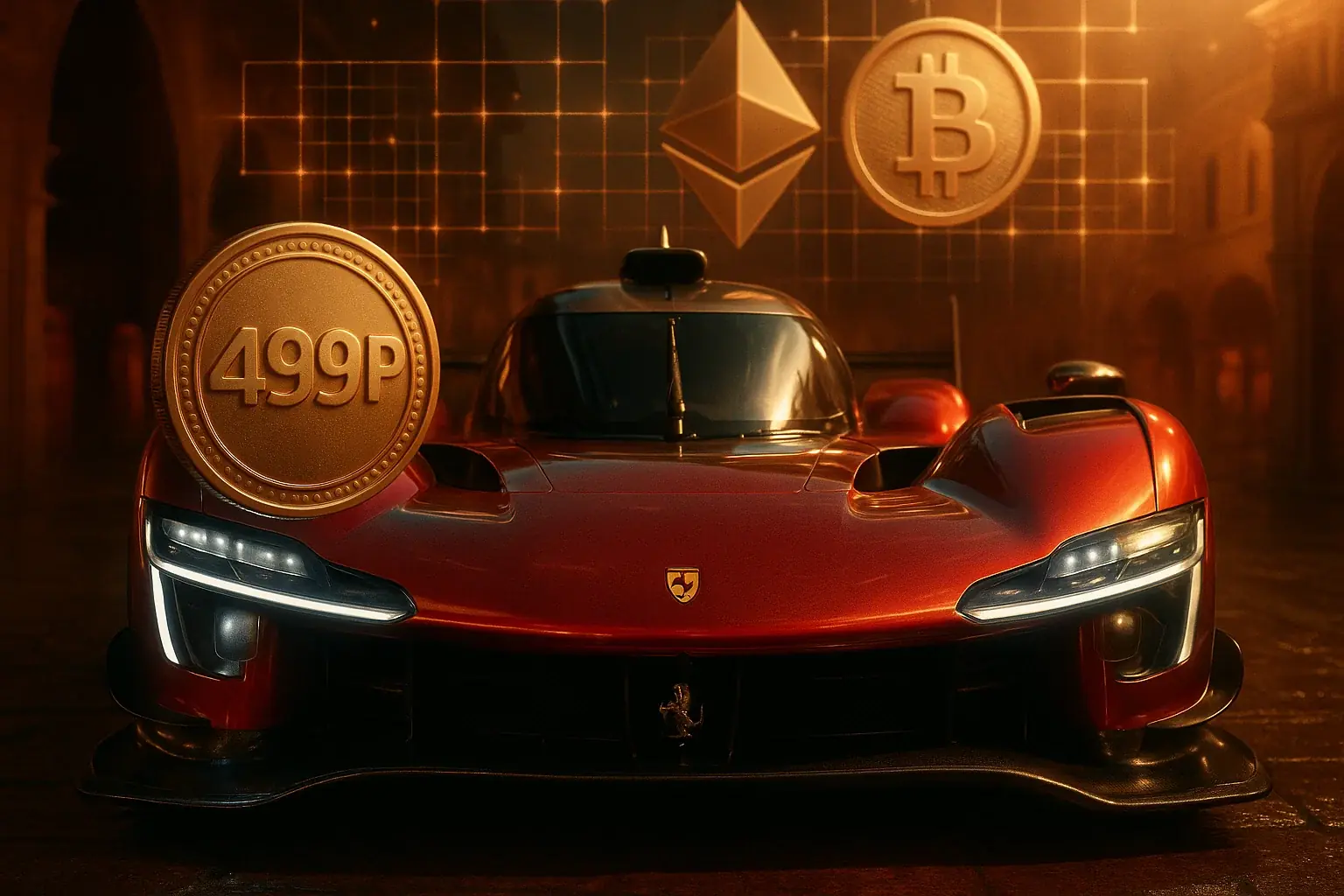
Ferrari and the 499P Token: Luxury in Blockchain, but Liquidity Remains Zero
Ferrari introduces the 'Ferrari 499P Token', a move that combines luxury and blockchain. However, the operation, reserved for an elite group of customers, seems more an image experiment than a real step towards liquidity in Bitcoin or Ethereum.




Ferrari is making a 'pit stop' in the world of cryptocurrency, but it is doing so in an exclusive way, targeting only its VIP clientele.
The Italian carmaker's intention is to issue a "Token Ferrari 499P" that its 100 most select customers will be able to use to bid on a Le Mans-winning race car.
This is a shining cross between luxury and blockchain: owning a part of Ferrari's history via digital tokens. But beyond the spectacle, a more difficult question emerges: does this move the real liquidity of Bitcoin or Ethereum, or is it just crypto 'theatre'?
Luxury Goes On-Chain, But at Closed Doors
Ferrari's flirtation with cryptocurrencies is nothing new. As early as 2023, it had begun accepting Bitcoin, Ethereum and USDC for car purchases, managed by BitPay and converted immediately into fiat currency.
The company never held cryptocurrency; the experience was more like a payment gimmick than a liquidity event.
The upcoming auction of the 499P follows the same pattern. It is managed with the fintech Conio according to the MiCA rules of the EU and is only open to Ferrari's "Hyperclub", about 100 pre-approved millionaires.
This exclusivity is in line with the Ferrari brand, but limits the role of cryptocurrency. It is almost certain that buyers will fund offerings in euros or pre-approved stablecoins via KYC (Know Your Customer), rather than procuring new ETH on exchanges.
The process will likely remain off-chain, unless Conio requires cryptocurrency deposits or settles directly on public networks. The most likely outcome: an elegant, fully compliant and barely visible transaction on the blockchain.
Liquidity and Provenance: The Reality of Low Volume Markets
Theoretically, tokenization could turn illiquid trophies into tradable investments, enabling fractional ownership. However, reality has not matched the promise.
Tokenised luxury projects often debut with fanfare only to fade into illiquidity. The case of CurioInvest's 2015 Ferrari F12 TDF, split into 1.1 million ERC-20 tokens, should have demonstrated the efficacy of the split. Today, those tokens are trading at around $0.15 with negligible volume.
The first sale of tokenised art, Maecenas' Warhol auction in 2018, had attracted $1.7 million in bids, but little secondary trading thereafter. Without active markets, these tokens function more like unlisted securities than digital assets, plagued by "persistently shallow markets".
Ferrari's approach is unlikely to cause measurable changes in demand for BTC or ETH. At best, a few wealthy bidders might liquidate cryptocurrency holdings to finance purchases, creating a small increase in exchange volume. At worst, the auction resolves entirely off-chain, producing zero on-chain movement.
Read Next
Quantum Computers and Bitcoin: The Real Threat Is Not Code, but Consent
With the advancement of quantum computing, Bitcoin faces a deeper challenge than just cryptographic risk: a political conflict over old currencies and network consensus.
North Korea: The Ultimate Cyber-Attack? Evasive Malware and Blockchain in the Crosshairs.
According to Cisco Talos and Google, the North Korean groups Famous Chollima and UNC5342 are employing new strains of decentralised malware (such as EtherHiding and the BeaverTail/OtterCookie pair)
SEAL's New Cryptographic System Makes Phishing Detection More Reliable
The Security Alliance (SEAL), a crypto crime investigation group, has unveiled its Verifiable Phishing Reporter, an innovative system that uses cryptographic protocols to ensure that reports of sites
Your Blockchain Is Not as Trustless as You Think